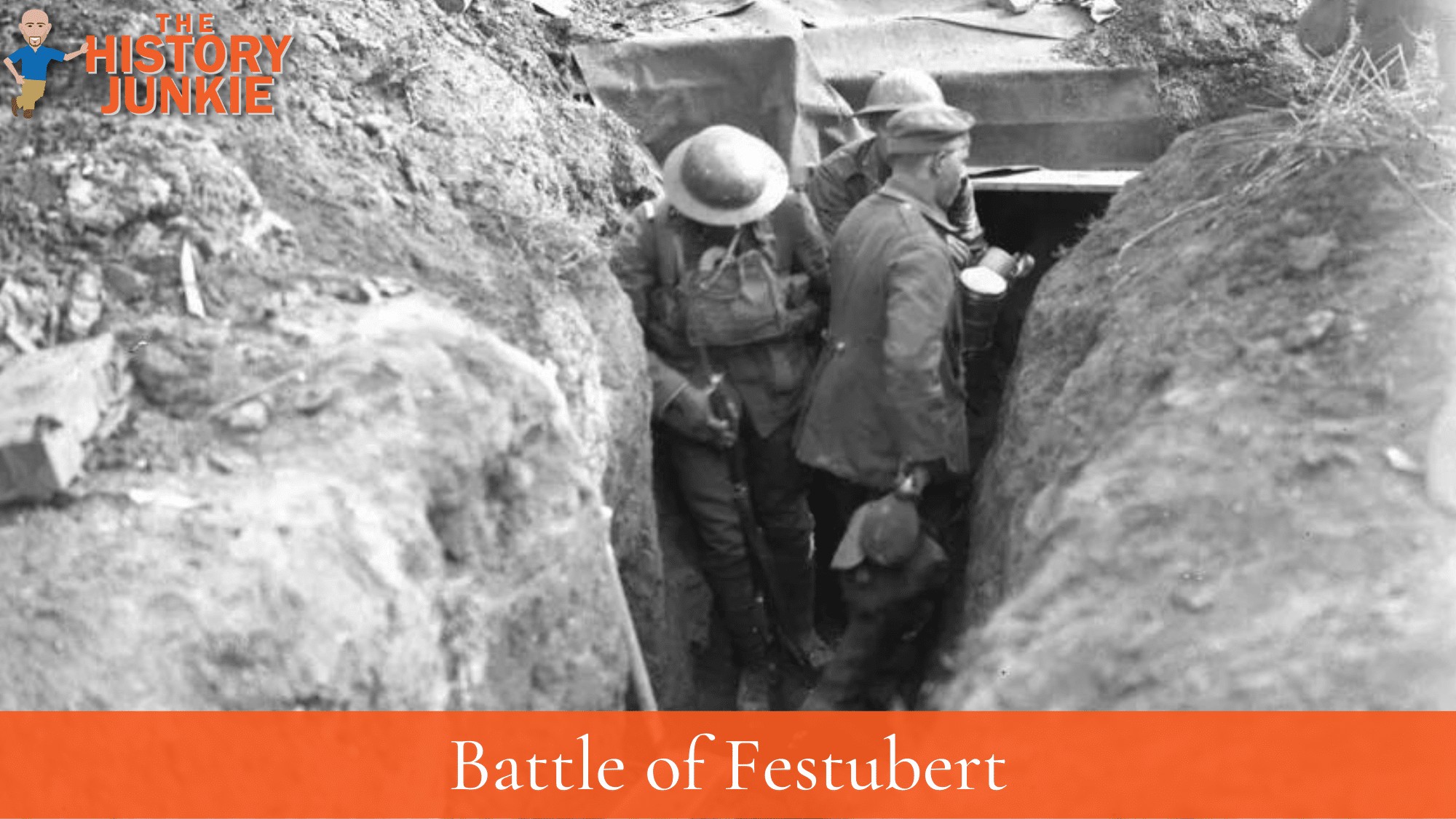The Battle of Festubert was a battle in World War 1, fought between the Allies (British, Canadian, and Indian troops) and the Germans from May 15-27, 1915.

The battle was part of the Second Battle of Artois, a larger offensive launched by the French Army.
The Fighting
The Allies attacked the German lines near the village of Festubert in the Ypres Salient. The attack was preceded by a four-day artillery bombardment, but the bombardment was not effective in destroying the German defenses. As a result, the Allied attack made slow progress.
The Canadians were particularly hard-hit during the battle. On May 18, they launched an assault on the German lines but were repulsed with heavy casualties. The British also suffered heavy casualties during the battle.
Despite the heavy casualties, the Allies eventually captured Festubert village on May 24. However, they were unable to advance any further. The battle ended on May 27, with the Allies having advanced less than a kilometer.
The Battle of Festubert was a costly victory for the Allies. The British suffered over 16,000 casualties, while the Canadians suffered over 8,000 casualties. The Germans also suffered heavy casualties, but they were able to hold their ground.
Conclusion
The Battle of Festubert was a failure for the Allies. They failed to achieve their objectives and suffered heavy casualties.
However, the battle did provide some valuable lessons for the Allies. They learned that they needed to improve their artillery tactics and that they needed to develop new weapons and tactics to break through the German lines.
The Battle of Festubert was a significant battle in World War 1. It was the first major battle to be fought after the introduction of poison gas. The battle also saw the first use of tanks by the British Army.
The Battle of Festubert was a costly and bloody battle, but it did provide some valuable lessons for the Allies. These lessons would help the Allies to achieve victory in the war.
